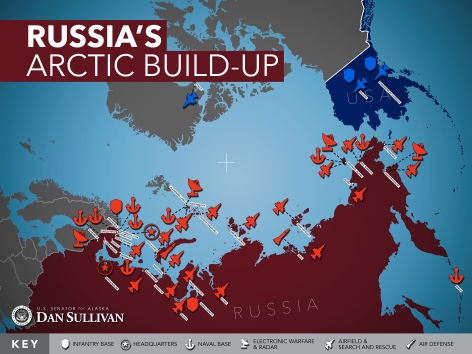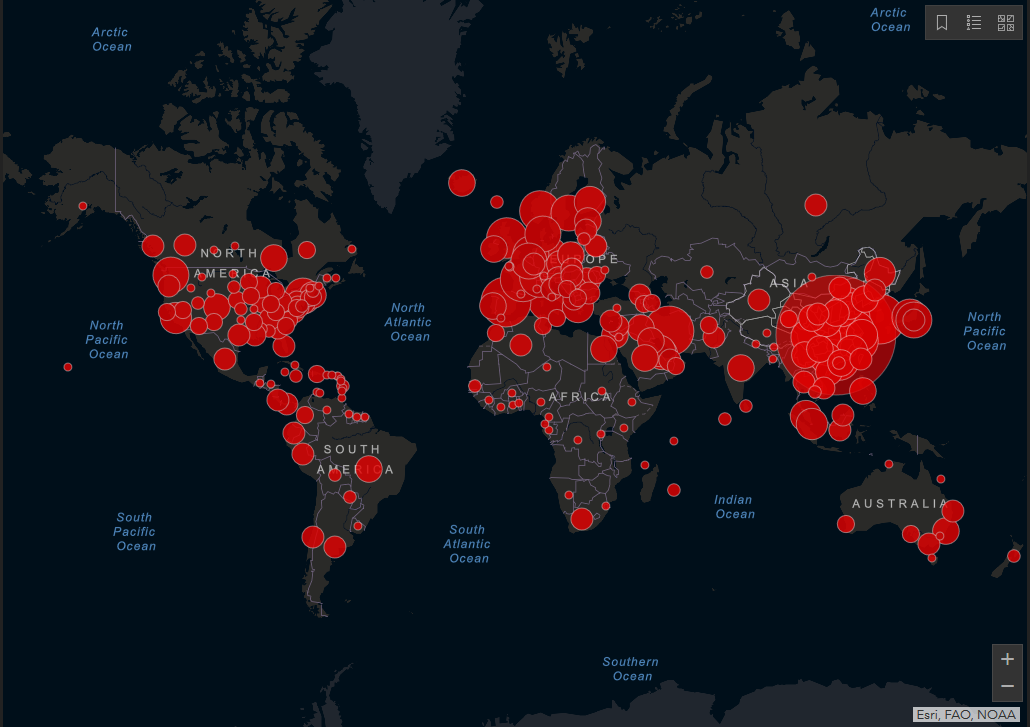> Pictured here: Venezuelan soldiers patrol town of San Antonio Tachira, near the Colombian border, on March 4, 2008. The Voice of America reports today: “Venezuelan military officials say they have now sent almost 6,000 soldiers to the country’s border with Colombia. The military said about 90 percent of its deployment to the border is complete.” Today US Defense Secretary and Council on Foreign Relations cadre Robert Gates dismissed reports that Venezuela’s deployment of troops and tanks to its border with US ally Colombia presaged war. “My personal view is that there’s relatively little likelihood of military conflict,” Gates sighed, with a nonchalance typical of dot.gov. Reuters reports:
Pictured here: Venezuelan soldiers patrol town of San Antonio Tachira, near the Colombian border, on March 4, 2008. The Voice of America reports today: “Venezuelan military officials say they have now sent almost 6,000 soldiers to the country’s border with Colombia. The military said about 90 percent of its deployment to the border is complete.” Today US Defense Secretary and Council on Foreign Relations cadre Robert Gates dismissed reports that Venezuela’s deployment of troops and tanks to its border with US ally Colombia presaged war. “My personal view is that there’s relatively little likelihood of military conflict,” Gates sighed, with a nonchalance typical of dot.gov. Reuters reports:
Pentagon: Venezuela-Colombia armed conflict unlikely
Wed Mar 5, 2008 2:48pm EST
WASHINGTON (Reuters) – Military conflict between Venezuela and Colombia is unlikely, U.S. Defense Secretary Robert Gates said on Wednesday, despite the deployment of Venezuelan forces to the border.
“My personal view is that there’s relatively little likelihood of military conflict,” Gates told reporters.
Asked if the U.S. government or military would assist Colombia — its closest ally in the region — in any armed conflict, Gates said, “The Colombians can take care of themselves.”
Venezuela on Wednesday said it deployed tanks and air and sea forces toward the Colombian border, escalating tensions over Bogota’s weekend raid inside another South American neighbor, Ecuador, to kill Colombian leftist rebels.
Venezuelan President Hugo Chavez, long a political foe of Washington, has in the past raised the specter of a U.S. attack against his country.
Gates, of course, is probably correct that the “Colombians can take care of themselves.” In terms of ground forces, the Colombian Army is twice as large as Venezuela and Ecuador’s combined, better equipped due to its military alliance with the USA and, after decades of fighting against two insurgent Marxist armies, battle hardened. However, Gates apparently overlooked the fact that Revolutionary Armed Forces of Colombia are endeavoring to build a nuclear bomb, a fact contained on computers seized by the Colombian security forces that bumped off senior FARC commander Raul Reyes on Ecuadorean soil on March 1.
 Pictured here: “Codependent” communists Hugo and Rafael cling together.
Pictured here: “Codependent” communists Hugo and Rafael cling together.
Meanwhile, the Organization of American States (OAS) has brokered a quick fix to resolve the political showdown between Colombian President Alvaro Uribe and his irate neo-Marxist neighbors, Venezuelan President Hugo Chavez and Ecuadorean President Rafael Correa. In exchange for Colombia’s compliance to the OAS panel that will investigate the killing of Reyes, the Ecuadorean government will not assert its right of retaliation against Colombia. In any event, former Venezuelan Defense Minister Raul Baduel, who defected from the Chavezista regime last year, inisted that Venezuela’s troop mobilization is a political maneuver designed to bolster the president’s sinking popularity. Moreover, Luis Vicente Leon, director of the Caracas-based polling firm Datanalisis, suggests that Chavez is probably trying to regain his standing in the face of soaring inflation and food shortages, as well as the rejection last year by voters of his proposal to rewrite the constitution.
However, Colombia’s lonely rightist regime is surrounded by leftist governments throughout Latin America that sympathize with the aims of the FARC and the smaller National Liberation Army. Even if Chavez is simply posturing for domestic reasons, the mobilization of the Venezuelan armed forces will undoubtedly unsettle the Colombians and, we would expect, provoke a counter-mobilization along the border, which could very well lead to war. We have already blogged about the strategic partnership between Moscow’s crypto-communist regime and Caracas’ overtly red dictatorship, an alliance that has already included the shipment of small arms, fighter jets, military helicopters, and conventional submarines to the South American nation, the construction of a plant that will manufacture more automatic rifles, and investment and exploration opportunities for Russia’s state-run energy giants like Gazprom. We have also documented the covert transfer of weapons to the FARC by the Red Mafiya and “rogue elements” in the Russian military.
Three days ago World-Check.com analyst Kenneth Rijock revealed a disturbing development that suggests that Brazil’s neo-communist regime, which is quietly allied with Chavez, is this week in the process of filling a rush order of firearms for Venezuela’s dictatorship. Rijock points out “that between 50,000 and 70,000 weapons will be contained in these shipments, which are not consigned for the Ministry of Defence, but are to be quietly delivered directly to the Miraflores Presidential Palace.”
Yet another high-risk indicator for Venezuela surfaces
By Kenneth Rijock, Financial Crime Consultant for World-Check
2 March 2008
If you remember the chaos that surrounded the Lebanese Civil War (1975-1990), you know that financial institutions simply cannot operate under conditions of street violence. The tenuous situation in Venezuela could soon reach that state, in light of disturbing new developments that have come to light. Read the details below, and decide for yourself whether a civil war is on the horizon in Caracas.
Here is what we know so far:
Four secret flights are scheduled into Venezuela, on TAM Brazilian Airlines, transporting 31.5 tonnes of firearms made in Brazil. The first flight has already arrived, carrying 1.5 tonnes of weapons; each additional flight is scheduled to bring in ten tonnes each.
Whilst the exact types of weapons are unknown, one can safely estimate that between 50,000 and 70,000 weapons will be contained in these shipments, which are not consigned for the Ministry of Defence, but are to be quietly delivered directly to the Miraflores Presidential Palace, on the orders of Venezuela’s President Hugo Chavez Frias. Why all the secrecy?
In a country where the armed forces and the police are already well-equipped, these weapons can only have one intended use; to arm civilian supporters of the current regime, who will use it upon the opposition in an expected violent confrontation that could degenerate into a civil war.
A civil disturbance would result in the complete shutdown of the financial system in the capital. Watch for any preliminary signs of organised violence, closure of shoppes and businesses, and attacks upon civilians.
While these shipments might indicate that the Bolivarian revolutionary is more concerned about covering his own back than taking on the Colombian Armed Forces, it is possible that Latin America’s Red Axis is preparing for an all-out assault on Bogota.





>It also certainly sounds like FARC may employ, nuclear terrorism against Colombia? I have also heard similar reports, except FARC Communist terrorists are plotting to employ biological terrorism, via dirty bomb attacks.You may wish to search for articles like what’s mention with dirty bombs and FARC terrorists.
>Russian mob trading arms for cocaine with Colombia rebelshttp://www.msnbc.msn.com/id/3340035/Russian-built IL-76 cargo planes take off from various airstrips in Russia and Ukraine laden with anti-aircraft missiles, small arms and ammunition. The planes, roughly the size of Boeing 707s and a mainstay of the modern cargo industry, stop in Amman, Jordan, to refuel. There, they bypass normal Jordanian customs with the help of corrupt foreign diplomats and bribed local officials. After crossing the Atlantic, the cargo jets use remote landing strips or parachute air-drops to deliver their cargo to the Revolutionary Armed Forces of Colombia, or FARC. The guerrilla group is challenging the authority of the U.S.-backed Colombian government, and its guerrillas provide security to Colombia’s cocaine cartels.That single drop last October was said by U.S. intelligence officials to have delivered $50 million worth of AK-47s deep inside FARC-held territory.